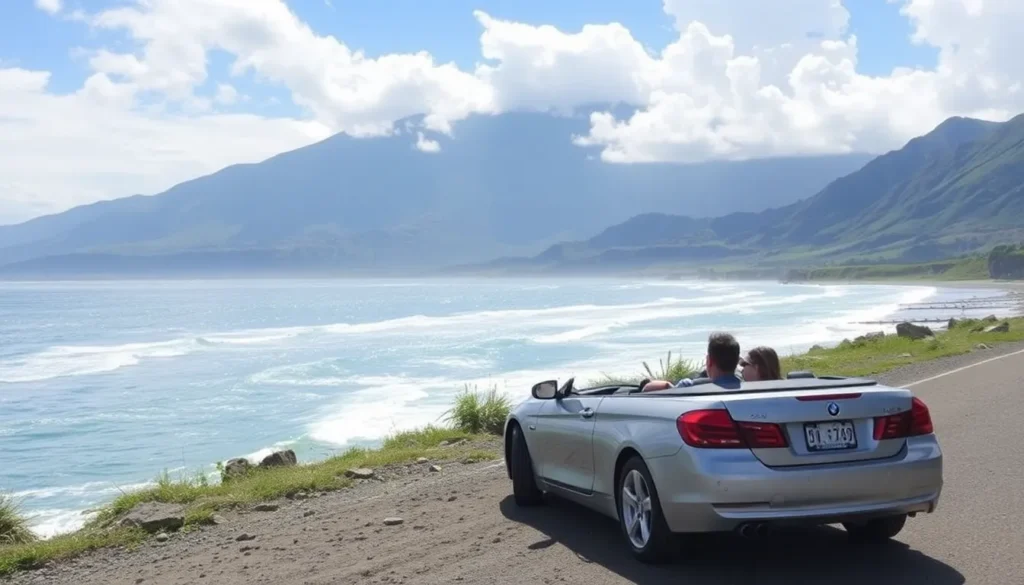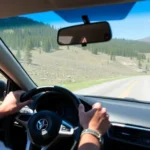Car rental tips for driving in Ecuador

Exploring Ecuador by car offers a unique opportunity to experience the country’s diverse landscapes and rich culture up close. With its compact size and well-maintained roads, renting a car provides the freedom to travel at your own pace. However, before embarking on this adventure, you may have numerous questions. Here, we present essential tips for driving in Ecuador and renting a car to help you navigate this beautiful destination confidently.
Driving in Ecuador: Key Insights
Driving in Ecuador can be an exhilarating experience, but it's crucial to be prepared. While you won't need a crash course on driving techniques, understanding the local conditions and regulations will enhance your journey. Here are some insights gained from those who have traveled Ecuador by road:
1. Road Conditions in Ecuador
Generally, the main roads in Ecuador are in decent condition, but some areas require caution due to rough terrain or poor maintenance. The country boasts several major highways, with the Pan-American Highway (E35) being the most notable, stretching from north to south through the Andes. Other significant routes include:
- E15: Running along the coast.
- E45: Bordering the Amazon rainforest.
- Numerous secondary roads connecting remote areas, suitable for compact cars.
While most primary and secondary roads are passable, keep your eye out for:
- The access roads to Cotopaxi National Park, particularly the northern route from Sangolquí, known for rough patches.
- The northern access to Quilotoa, which has been reported to be in poor condition.
- Roads from Cañar to the north, which have significant potholes.
- The scenic route from Cuenca to Guayaquil via El Cajas, which is beautiful but winding with construction areas.
- Dirt and gravel tracks leading to remote attractions, like the Palmira Desert dunes.
For clarity on road conditions, using Google Street View can be particularly helpful when planning your route.
2. Navigating Elevation Changes
The Sierra region, which includes the Andes mountains, features steep inclines and declines. It’s common to find yourself driving from elevations of 2,000 meters to over 4,000 meters, and back down to sea level. If you’re driving a smaller vehicle, such as a compact car, you may struggle with these altitude changes. Consider these tips:
- Choose a mid-range vehicle that has enough power to handle steep ascents.
- Be prepared to shift gears frequently; you may find yourself in lower gears on steep climbs.
- Check your vehicle's performance, especially if it’s a compact model, to avoid overheating.
3. Wildlife on the Roads
One of the quirks of driving in Ecuador is encountering wildlife, particularly stray dogs. While many are friendly and well-fed, you must be cautious. Additionally, rockslides are common, especially during rainy seasons. Here are some things to watch for:
- Keep an eye out for dogs lounging on the roadside; they often do not move until the last moment.
- Be aware of loose rocks or landslides, particularly after heavy rain.
- Drive at moderate speeds to react quickly to unexpected obstacles.
4. Sampling Local Cuisine on the Go
Driving through Ecuador offers countless opportunities to indulge in local delicacies. Whether you’re passing through a bustling market or a remote village, you’ll come across vendors selling:
- Whole roasted pigs and cuy (guinea pig).
- Delicious ice cream from Salcedo.
- Fresh fruits and snacks at roadside stalls.
Take the time to stop and enjoy these local treats; they add to the richness of your travel experience.
5. Utilization of GPS and Navigation Apps
For navigation, Google Maps is generally reliable across Ecuador. However, many travelers recommend using Waze for its real-time traffic updates and alerts about speed traps. Additionally:
- Download offline maps with Maps.me to avoid connectivity issues.
- Review your route using Google Street View to familiarize yourself with road conditions.
- Expect travel times to be longer than estimated, especially in smaller vehicles, by 10-20%.
6. Awareness of Speed Traps
Speed traps are common near urban areas, marked by yellow panels showing your current speed. The speed limits on major highways typically range from 90 to 110 km/h. Always adhere to posted signs to avoid fines.
7. Fuel Stations
Gasoline prices are set by the government, making them relatively low compared to many other countries. Here’s what you should know about fuel in Ecuador:
- There are three types of fuel available: diesel, extra (87 octane), and super (92 octane).
- All gas stations are full-service; attendants will assist you with refueling.
- It’s advisable to refuel before long stretches of driving, especially in remote areas where fuel stations are scarce.
Be cautious about running low on gas, especially when heading to less populated areas, where you may find fuel sold at higher prices in small shops.
8. Tolls and Fees
Most tolls are located on the Pan-American Highway and surrounding areas near Quito. The toll fee typically ranges from $0.60 to $1.00 and can be paid in cash. Keep your receipt, as it grants you free roadside assistance in case of a breakdown.
9. International Driving License Requirements
While it’s not mandatory to have an international driving permit to drive in Ecuador, it’s a good idea to carry one along with your home country’s license, especially if you plan to stay for more than six months.
Renting a Car in Ecuador: Essential Considerations
Several reputable car rental companies operate in Ecuador, including Europcar, Enterprise, Sixt, Avis, and Localiza. Here are some tips for securing the best rental car experience:
Choosing the Right Rental Company
It’s often advantageous to book through a comparison website like Auto Europe or Discovercars. This allows you to compare prices and vehicles across various companies efficiently.
What to Look for When Renting
When renting a car, consider the following:
- Check for the availability of comprehensive insurance to cover damages.
- Inspect the vehicle meticulously before driving off; note any pre-existing damages.
- Inquire about mileage limits and fuel policies.
Tips for a Smooth Rental Process
Here are some additional tips to ensure a seamless rental experience:
- Reserve your car in advance, especially during peak tourist seasons.
- Be mindful of the age and condition of the vehicle; opt for something more powerful for mountainous areas.
- Ask about roadside assistance in case of emergencies.
By following these insights and tips, you’ll be well prepared to explore the captivating landscapes of Ecuador with the freedom a rental car provides. Discovering the hidden gems of this diverse country will undoubtedly leave lasting memories as you traverse its stunning highways.
For more practical tips, check out this helpful video:
Embarking on a road trip in Ecuador is not just about the destination; it's about the journey and the experiences you gather along the way. With the right preparation, your adventure will be both exciting and memorable.




Deja una respuesta